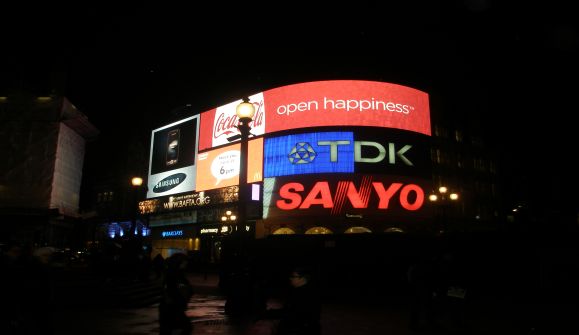Piccadilly Circus
The Circus, once considered the hub of the Empire, attracts a large crowd. It was created by John Nash as part of his new road from Carlton House in St James's to Regent's Park. The Statue of Eros, officially the Angel of Christian Charity, is a memorial drinking fountain erected in 1892 to the philanthropist, Lord Shaftesbury.

Piccadilly Circus is a famous road junction and public space of London's West End in the City of Westminster, built in 1819 to connect Regent Street with the major shopping street of Piccadilly. In this context a circus, from the Latin word meaning a circle, is a circular open space at a street junction.
It now links directly to the theatres on Shaftesbury Avenue as well as the Haymarket, Coventry Street (onwards to Leicester Square), and Glasshouse Street. The Circus is close to major shopping and entertainment areas in the heart of the West End. Its status as a major traffic-intersection has made Piccadilly Circus a busy meeting place and a tourist attraction in its own right.
The Circus is particularly known for its video display and neon signs mounted on the corner building on the northern side, as well as the Shaftesbury memorial fountain and statue of an archer popularly known as Eros (sometimes called The Angel of Christian Charity, but intended to be Anteros). It is surrounded by several noted buildings, including the London Pavilion and Criterion Theatre. Directly underneath the square is Piccadilly Circus London Underground station.

Piccadilly Circus at night
The name 'Piccadilly' originates from a 17th century frilled collar, named piccadil. Roger Baker, a tailor who became rich making piccadils, lived in the area. The word 'Circus' refers to the roundabout around which the traffic circulated.